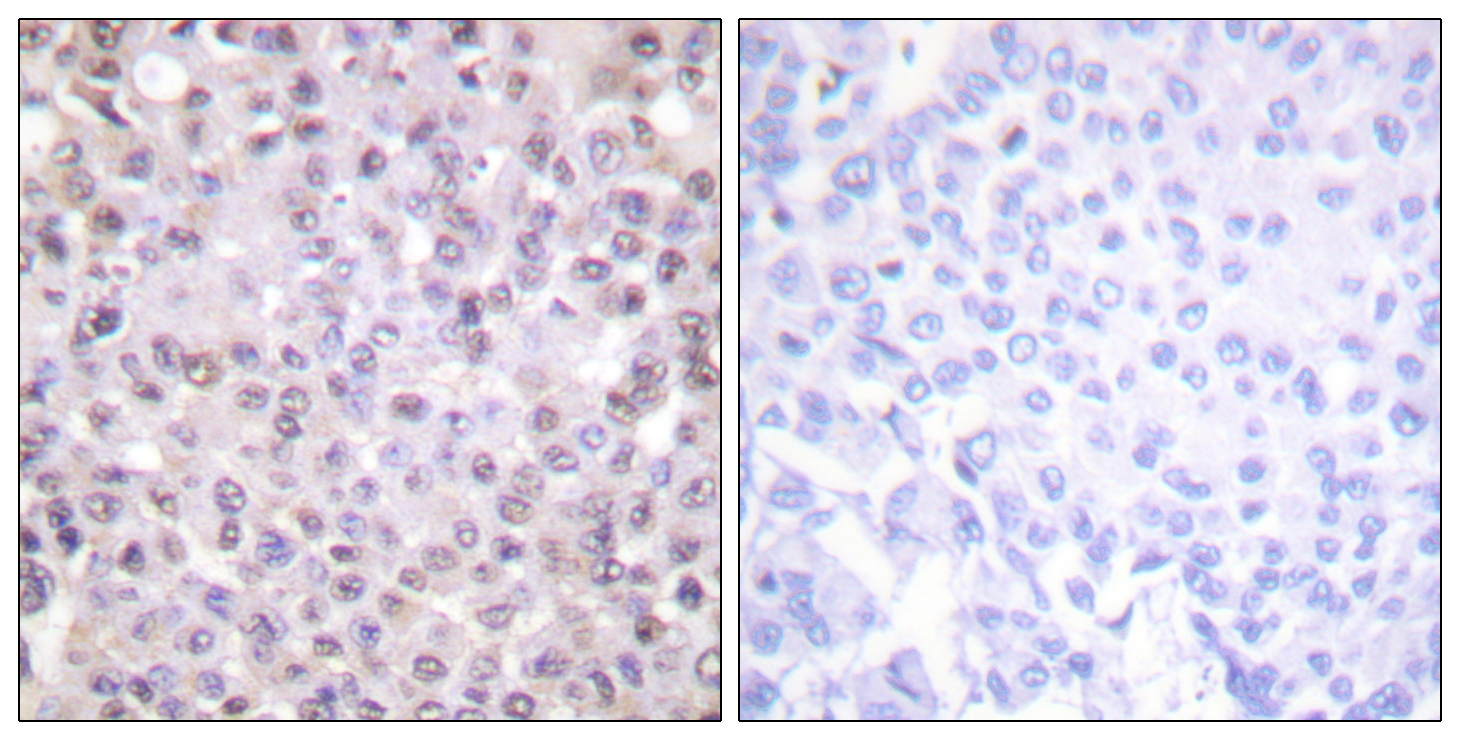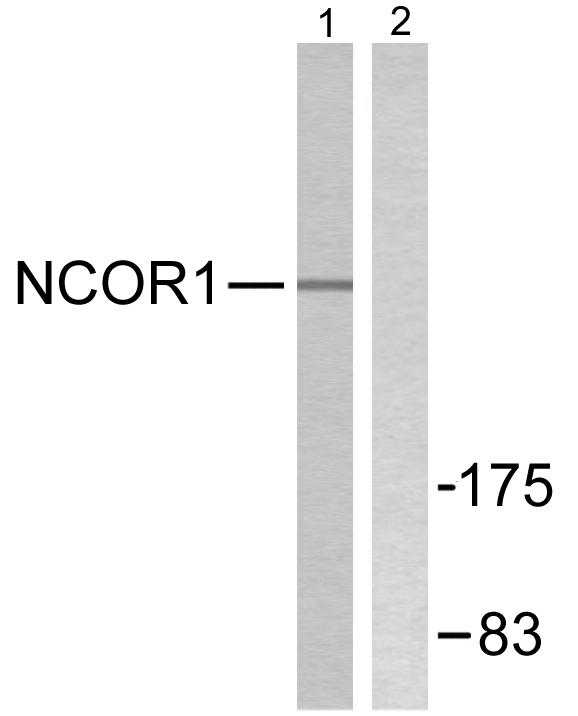N-CoR Polyclonal Antibody
- Catalog No.:YT2999
- Applications:WB;IHC;IF;ELISA
- Reactivity:Human;Mouse
- Target:
- NCOR1
- Fields:
- >>Endocrine resistance;>>Thyroid hormone signaling pathway;>>Transcriptional misregulation in cancer
- Gene Name:
- NCOR1
- Protein Name:
- Nuclear receptor corepressor 1
- Human Gene Id:
- 9611
- Human Swiss Prot No:
- O75376
- Mouse Swiss Prot No:
- Q60974
- Immunogen:
- The antiserum was produced against synthesized peptide derived from human NCoR1. AA range:51-100
- Specificity:
- N-CoR Polyclonal Antibody detects endogenous levels of N-CoR protein.
- Formulation:
- Liquid in PBS containing 50% glycerol, 0.5% BSA and 0.02% sodium azide.
- Source:
- Polyclonal, Rabbit,IgG
- Dilution:
- WB 1:500 - 1:2000. IHC 1:100 - 1:300. IF 1:200 - 1:1000. ELISA: 1:20000. Not yet tested in other applications.
- Purification:
- The antibody was affinity-purified from rabbit antiserum by affinity-chromatography using epitope-specific immunogen.
- Concentration:
- 1 mg/ml
- Storage Stability:
- -15°C to -25°C/1 year(Do not lower than -25°C)
- Other Name:
- NCOR1;KIAA1047;Nuclear receptor corepressor 1;N-CoR;N-CoR1
- Observed Band(KD):
- 270kD
- Background:
- This gene encodes a protein that mediates ligand-independent transcription repression of thyroid-hormone and retinoic-acid receptors by promoting chromatin condensation and preventing access of the transcription machinery. It is part of a complex which also includes histone deacetylases and transcriptional regulators similar to the yeast protein Sin3p. This gene is located between the Charcot-Marie-Tooth and Smith-Magenis syndrome critical regions on chromosome 17. Alternate splicing results in multiple transcript variants. Pseudogenes of this gene are found on chromosomes 17 and 20.[provided by RefSeq, Jun 2010],
- Function:
- domain:The C-terminal region contains two separate nuclear receptor-interacting domains (ID1 and ID2), each of which contains a conserved sequence referred to as the CORNR box. This motif is necessary and sufficient for binding to unligated nuclear hormone receptors, while sequences flanking the CORNR box determine the precise nuclear hormone receptor specificity.,domain:The N-terminal region contains three independent domains that are capable of mediating transcriptional repression (RD1, RD2 and RD3).,function:Mediates transcriptional repression by certain nuclear receptors. Part of a complex which promotes histone deacetylation and the formation of repressive chromatin structures which may impede the access of basal transcription factors.,PTM:Ubiquitinated; mediated by SIAH2 and leading to its subsequent proteasomal degradation.,similarity:Belongs to the N-CoR nuclear receptor corepres
- Subcellular Location:
- Nucleus .
- Expression:
- Brain,Colon,Epithelium,Fetal brain,Lung,Ovary,Pancreas,Pooled,Skin,Testis,
- June 19-2018
- WESTERN IMMUNOBLOTTING PROTOCOL
- June 19-2018
- IMMUNOHISTOCHEMISTRY-PARAFFIN PROTOCOL
- June 19-2018
- IMMUNOFLUORESCENCE PROTOCOL
- September 08-2020
- FLOW-CYTOMEYRT-PROTOCOL
- May 20-2022
- Cell-Based ELISA│解您多样本WB检测之困扰
- July 13-2018
- CELL-BASED-ELISA-PROTOCOL-FOR-ACETYL-PROTEIN
- July 13-2018
- CELL-BASED-ELISA-PROTOCOL-FOR-PHOSPHO-PROTEIN
- July 13-2018
- Antibody-FAQs
- Products Images

- Immunohistochemistry analysis of paraffin-embedded human breast carcinoma tissue, using NCoR1 Antibody. The picture on the right is blocked with the synthesized peptide.

- Western blot analysis of lysates from MDA-MB-435 cells, using NCoR1 Antibody. The lane on the right is blocked with the synthesized peptide.



